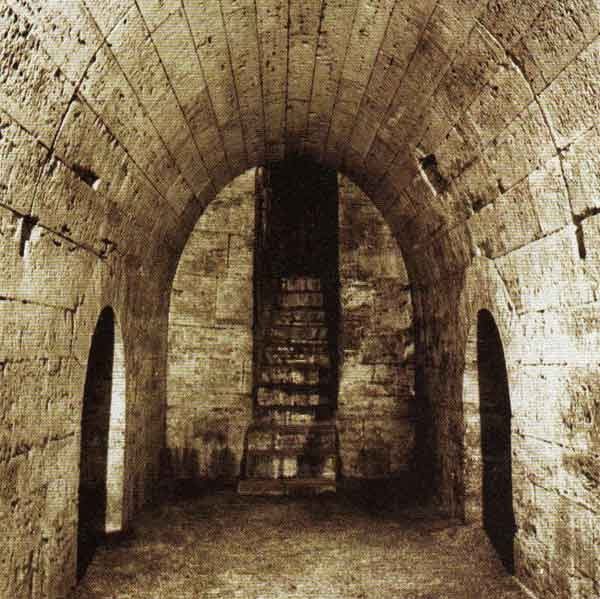A tre chilometri circa dalla stazione di Fontivegge, poco lontano dalla via Cortonese, si trova l‘Ipogeo di San Manno. Esso è costituito da un ambiente abbastanza grande a volta in blocchi di travertino, secondo uno stile architettonico che anticipa le strutture romane del II / I secolo. Sulle pareti vi è un’iscrizione su tre linee, in lingua etrusca fra le più lunghe di quelle conosciute. Al di sopra dell’Ipogeo del III secolo avanti Cristo, è la chiesa restaurata nel XVI secolo, con all’interno ciò che resta di affreschi del XIII secolo e un’opera (affresco) di Scilla Peccenini del 1585.
More or less three kilometres away from the train station of Fontivegge, not too far away from via Cortonese, you can find the subterranean of Manno. It is constituted of an atmosphere quite large with vaults made of blocks of travertine, according to an architectonic style that forecasts the roman structures of the II / I century. On the wall there is a three line inscription, in Etruscan language, that is among the longest one known. Above the subterranean of the III century before Christ, there is the church restored in the XVI century, with inside what has remained from the frescos of the XIII century and a work (fresco) of Scilla Peccenini dating back to 1585.
More or less three kilometres away from the train station of Fontivegge, not too far away from via Cortonese, you can find the subterranean of Manno. It is constituted of an atmosphere quite large with vaults made of blocks of travertine, according to an architectonic style that forecasts the roman structures of the II / I century. On the wall there is a three line inscription, in Etruscan language, that is among the longest one known. Above the subterranean of the III century before Christ, there is the church restored in the XVI century, with inside what has remained from the frescos of the XIII century and a work (fresco) of Scilla Peccenini dating back to 1585.
More or less three kilometres away from the train station of Fontivegge, not too far away from via Cortonese, you can find the subterranean of Manno. It is constituted of an atmosphere quite large with vaults made of blocks of travertine, according to an architectonic style that forecasts the roman structures of the II / I century. On the wall there is a three line inscription, in Etruscan language, that is among the longest one known. Above the subterranean of the III century before Christ, there is the church restored in the XVI century, with inside what has remained from the frescos of the XIII century and a work (fresco) of Scilla Peccenini dating back to 1585.
More or less three kilometres away from the train station of Fontivegge, not too far away from via Cortonese, you can find the subterranean of Manno. It is constituted of an atmosphere quite large with vaults made of blocks of travertine, according to an architectonic style that forecasts the roman structures of the II / I century. On the wall there is a three line inscription, in Etruscan language, that is among the longest one known. Above the subterranean of the III century before Christ, there is the church restored in the XVI century, with inside what has remained from the frescos of the XIII century and a work (fresco) of Scilla Peccenini dating back to 1585.


Comment (0)